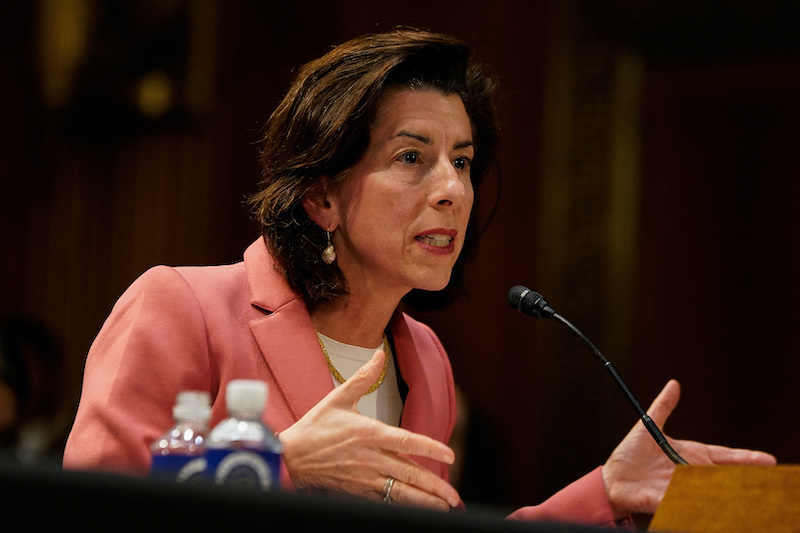US Commerce Secretary Gina Raimondo flies to China on Sunday for a visit that could ease tensions between the world’s two biggest economies.
China and the US have been drifting apart economically, with both looking to trade and and source goods closer to home.
Washington is now trading more with neighbouring Canada and Mexico, while Beijing is trading more with Southeast Asia.
Analysts see this as an emerging new trend of trade regionalisation in the eastern and western hemispheres – each dominated by one of the superpower – that could pose risks to global growth.
ALSO SEE: China Needs a Rethink on State Spending to Lift Slowing Economy
Global trade becoming more regional
“Changing trade patterns suggest that economic restrictions imposed by China and the US on each other are beginning to divert trade,” Neil Thomas, a fellow in Chinese politics at the Asia Society Policy Institute, said.
This “will likely contribute to increased regionalisation of international trade, which would raise inflation and hamper growth for other countries caught in the crossfire.”
After Donald Trump imposed tariffs, his successor as president, Joe Biden, and US allies such as Japan and the Netherlands have restricted exports to China of advanced semiconductors and the equipment to make them, citing security concerns.
China has curbed exports of two metals used in semiconductor fabrication.
US officials have said Raimondo will carry a message that Washington is not seeking to decouple from China, but will protect its national security. A Chinese official said Beijing was “looking forward” to discuss challenges in bilateral trade.
Two-way trade down 19.6% in first half
Other factors are weighing on US-China trade. Higher US interest rates crimp demand, including for products from China, where the economy is stuttering amid feeble domestic consumption, real estate woes, high debts and industrial overcapacity.
Two-way trade for the first half of the year plunged 19.6%, or $67.6 billion, from the same period in 2022, US Census Bureau data shows. Flows hit a record $690 billion last year.
Contributing to regionalisation, the US-Mexico-Canada Agreement trade deal was completed in 2020 when China signed up to the Regional Comprehensive Economic Partnership with 10 Southeast Asian countries, Japan, South Korea, Australia and New Zealand.
China has also applied to join the Comprehensive Progressive Trans-Pacific Partnership, one of the world’s largest free-trade agreements. The US under Trump walked away from a predecessor agreement in 2017.
To join this Pacific trade axis, though, China needs the approval from all member countries, including US allies.
Washington “could very easily lean quite strongly on Canada and Mexico to not support China’s bid,” William Hurst, a professor of Chinese development at the University of Cambridge, said.
“And both of those countries value trade with the US under their North American framework more than they value trade with China.”
Removal of China firms from export control list welcomed
Raimondo will visit Beijing and Shanghai. Her visit has been buoyed by a Commerce Department announcement on Monday that it was removing 27 Chinese companies from US export controls.
China’s Ministry of Commerce welcomed the decision, saying it was conducive to trade and reflected the interests of both sides.
Analysts said the move would help improve the mood during Raimondo’s visit, partly by showing the Biden administration wants to continue government-to-government communication, rather than decoupling from China, as some have suggested.
Tian Yun, a Beijing-based economist said the move sent a positive signal.
“It serves as a gesture of goodwill and sets a friendly atmosphere for Raimondo’s visit to China,” Tian told the Global Times on Tuesday.
- Reuters with additional reporting and editing by Jim Pollard
ALSO SEE:
China Limits Offshore Bond Purchases to Bolster the Yuan
Contentious China-US Science Deal May Get 6-Month Extension
US Checking EV Battery Imports Over China Forced Labour Fears
Chinese Graduates Quit Cities as Youth Unemployment Soars
























